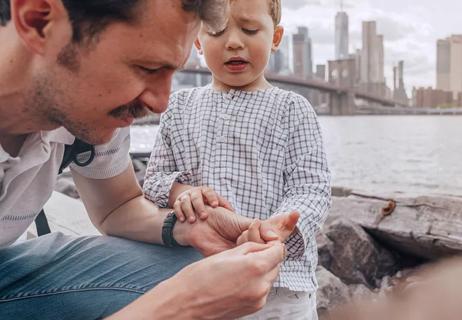Now’s the time to teach older kids to swallow pills

Your poor kiddo is coughing, sniffling and maybe even running a fever. Like any good parent, you rush to the nearest drugstore to grab a pain reliever suitable for kids, only to find the shelves empty. The same is true at the next drugstore … and the next.
Advertisement
Cleveland Clinic is a non-profit academic medical center. Advertising on our site helps support our mission. We do not endorse non-Cleveland Clinic products or services. Policy
This winter’s so-called “tripledemic” — with cases of the flu, COVID-19 and RSV on the rise — has led to a shortage of children’s pain relief medications. What’s a parent to do?
Pediatrician Richard So, MD, shares some options for helping ease your sick kid’s symptoms.
This might seem counterintuitive, but just because your child has a fever doesn’t mean they’re necessarily unwell. A fever is part of the immune system’s attempt to fight off an infection — but not all fevers need to be treated.
In fact, if your thermometer shows that they have a fever but they seem to be otherwise in good spirits, you don’t need to do much of anything at all.
“Remember, a fever is not a disease,” Dr. So says. “It’s one of the signs that tells us that something is going on with your child. If your child has a fever but is acting and playing normally, we don’t advise you to treat that fever.”
Of course, if your child has a fever and seems miserable, that’s another story. In that case, here’s how to proceed.
You may have thought that only adults could take pain relief medications in pill form. But they’re safe for kids ages 6 and up, too, as long as they can swallow them.
“Sometimes, parents are shocked to learn this,” Dr. So says. “The thinking is that liquid is for kids and pills are for adults. But 200 milligrams of medicine is 200 milligrams of medicine, no matter what form.”
Advertisement
Try these steps for teaching your child to swallow a pill:
When they’ve successfully made the switch, you’ll no longer have to rely on liquids, during this shortage and beyond.
Remember what we just said about dosages? As long as the dosage is right, the form can vary. That means for younger kids, you can hide a crushed-up pill in a food you know they’ll eat.
“For toddlers, you can try crushing chewable tablets to mix in ice cream, yogurt, applesauce or chocolate syrup,” Dr. So advises.
Just make sure you know which cold and flu products are safe for your child. And it’s always best to talk to your healthcare provider first, especially before giving any kind of medication to infants.
When your child is sick, you feel like you’ll do anything to try to ease their discomfort. Typically, a fever will break on its own, but in the meantime, here are a few things you can try:
Be sure that sick kids get plenty of rest and fluids, too, which are both critical to the recovery process.
During this shortage, some stores have put a limit on how many bottles of children’s pain relief medication you can purchase at one time.
But just because a store doesn’t have a limit in place doesn’t mean you should clear their shelves. “Take only what you need and leave some for other worried parents with a sick child,” Dr. So states.
Got some old liquid pain reliever somewhere in the back of your medicine cabinet? If the expiration date has passed, throw it out — yes, even in a shortage.
The U.S. Food and Drug Administration (FDA) warns that expired medicine is less effective and could even be dangerous because of the chemical changes that can happen over time.
Dr. So says if you’ve tried everything and your kid isn’t getting any better (or seems to be getting worse), then it’s time to seek medical care. “If your kid has a fever, feels under the weather, is a little glassy-eyed and not acting right, then it’s time to bring them in so we can run some tests.”
Advertisement
Learn more about our editorial process.
Advertisement

Be involved in your kid’s care, but be mindful of boundaries

Children don’t come with an instruction manual, but here's our best advice for a good night’s rest

Typically, you don’t need to monitor your child’s four vital signs

Eat the right foods, and get plenty of sleep and exercise

The best tools and practices from a pediatrician

Share this list with anyone who cares for your baby

How to know when a stomachache is something more serious

Type 2 diabetes isn’t inevitable with these dietary changes

Applying a hot or cold compress can help with pain